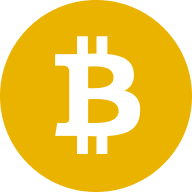
Prezzo di Bittorrent

Disclaimer
OKX non fornisce raccomandazioni su investimenti o asset. Devi considerare attentamente se il trading o l'holding di asset digitali è adatto a te alla luce della tua condizione finanziaria. Consulta un professionista legale/fiscale/finanziario per domande sulla tua specifica situazione. Per ulteriori dettagli, fai riferimento ai nostri Termini di utilizzo e all'Avviso di rischio. Utilizzando il sito web di terze parti ("TPW"), accetti che qualsiasi utilizzo del TPW sarà soggetto alle condizioni del TPW e disciplinato dalle stesse. Se non espressamente dichiarato per iscritto, OKX e i suoi affiliati ("OKX") non sono associati in alcun modo al proprietario o all'operatore del TPW. Accetti che OKX non è responsabile di eventuali perdite, danni e qualsiasi altra conseguenza derivanti dall'utilizzo del TPW. Tieni presente che l'uso di un TPW potrebbe comportare una perdita o una diminuzione dei tuoi asset. Il prodotto potrebbe non essere disponibile in tutte le giurisdizioni.
Informazioni sul mercato di Bittorrent
Capitalizzazione di mercato = Offerta circolante x Ultimo prezzo

Il prezzo oggi dei Bittorrent in USD
Conversioni di Bittorrent popolari
Informazioni su Bittorrent (BTT)
- Sito web ufficiale
- Block explorer
Domande frequenti relative al prezzo di Bittorrent
BTT è una criptovaluta creata da BitTorrent Inc. nel 2019 per promuovere la condivisione di file sulla rete di BitTorrent. Viene utilizzata come pagamento per facilitare i download più veloci sulla rete di BitTorrent. Inoltre, serve a compensare i fornitori di spazio di archiviazione per il loro contributo alla rete di BitTorrent.
Con la continua espansione della rete di BitTorrent, la domanda di BTT probabilmente aumenterà. L'acquisizione della rete di BitTorrent da parte di TRON è una pietra miliare significativa, che la distingue da progetti simili come IPFS e Storj. Attualmente BitTorrent utilizza i nodi dell'ecosistema di BitTorrent e di TronGrid. In prospettiva, TronGrid vanta oltre 1.000 nodi completi e circa 30 super rappresentanti. Queste enormi capacità fanno di BitTorrent un concorrente formidabile nella corsa allo storage decentralizzato.
Acquista facilmente token BTT sulla piattaforma di criptovalute OKX. Il terminale di trading di spot di OKX offreBTT/USDTcoppia di trading.
Puoi anche acquistare BTT con oltre 99 valute fiat selezionando l'opzione "Acquisto express". Altri token di criptovaluta popolari, comeBitcoin (BTC),Ethereum (ETH),Tether (USDT), eUSD Coin (USDC), sono disponibili anche.
In alternativa, puoi eseguire lo swap delle criptovalute esistenti, tra cuiXRP (XRP),Cardano (ADA),Solana (SOL), eChainlink (LINK), per BTT senza commissioni e senza slippage di prezzoConverti di OKX.
Per visualizzare i prezzi di conversione stimati in tempo reale tra valute fiat, come USD, EUR, GBP e altri, in BTT, visita laCalcolatore convertitore di criptovalute OKX. L'exchange di criptovalute ad alta liquidità di OKX garantisce i prezzi migliori per i tuoi acquisti di criptovalute.
Informativa ESG
Disclaimer
OKX non fornisce raccomandazioni su investimenti o asset. Devi considerare attentamente se il trading o l'holding di asset digitali è adatto a te alla luce della tua condizione finanziaria. Consulta un professionista legale/fiscale/finanziario per domande sulla tua specifica situazione. Per ulteriori dettagli, fai riferimento ai nostri Termini di utilizzo e all'Avviso di rischio. Utilizzando il sito web di terze parti ("TPW"), accetti che qualsiasi utilizzo del TPW sarà soggetto alle condizioni del TPW e disciplinato dalle stesse. Se non espressamente dichiarato per iscritto, OKX e i suoi affiliati ("OKX") non sono associati in alcun modo al proprietario o all'operatore del TPW. Accetti che OKX non è responsabile di eventuali perdite, danni e qualsiasi altra conseguenza derivanti dall'utilizzo del TPW. Tieni presente che l'uso di un TPW potrebbe comportare una perdita o una diminuzione dei tuoi asset. Il prodotto potrebbe non essere disponibile in tutte le giurisdizioni.











Social